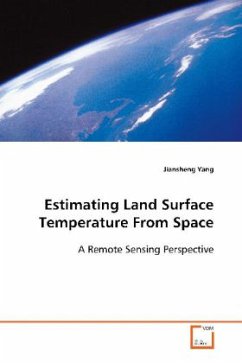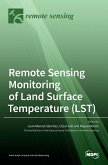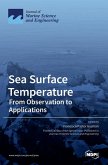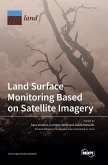This study addresses the fundamental science question
of modeling land surface temperature (LST) by
combining the field experiment, spatial
interpolation, and satellite thermal infrared remote
sensing. Landsat thermal data were applied to derive
surface emissivity and brightness temperature.
Field-observed temperatures were used to develop
algorithms for predicting air temperature profiles in
a forest canopy. The accuracy of LST estimates for
the study site was significantly improved by
calibration using satellite-derived surface
emissivity. The results showed that split-window
method can be used to estimate LST using brightness
temperatures derived from Landsat thermal data.
Twenty-four polynomial models were developed using
field observations to simulate and predict the air
temperature profiles in a forest canopy at any hour
during a summer day. This study demonstrated that the
combination of satellite thermal remote sensing,
spatial interpolation, and field empirical models is
capable of obtaining accurate LST from Landsat data
and predicting air temperature profiles in forest canopy.
of modeling land surface temperature (LST) by
combining the field experiment, spatial
interpolation, and satellite thermal infrared remote
sensing. Landsat thermal data were applied to derive
surface emissivity and brightness temperature.
Field-observed temperatures were used to develop
algorithms for predicting air temperature profiles in
a forest canopy. The accuracy of LST estimates for
the study site was significantly improved by
calibration using satellite-derived surface
emissivity. The results showed that split-window
method can be used to estimate LST using brightness
temperatures derived from Landsat thermal data.
Twenty-four polynomial models were developed using
field observations to simulate and predict the air
temperature profiles in a forest canopy at any hour
during a summer day. This study demonstrated that the
combination of satellite thermal remote sensing,
spatial interpolation, and field empirical models is
capable of obtaining accurate LST from Landsat data
and predicting air temperature profiles in forest canopy.








